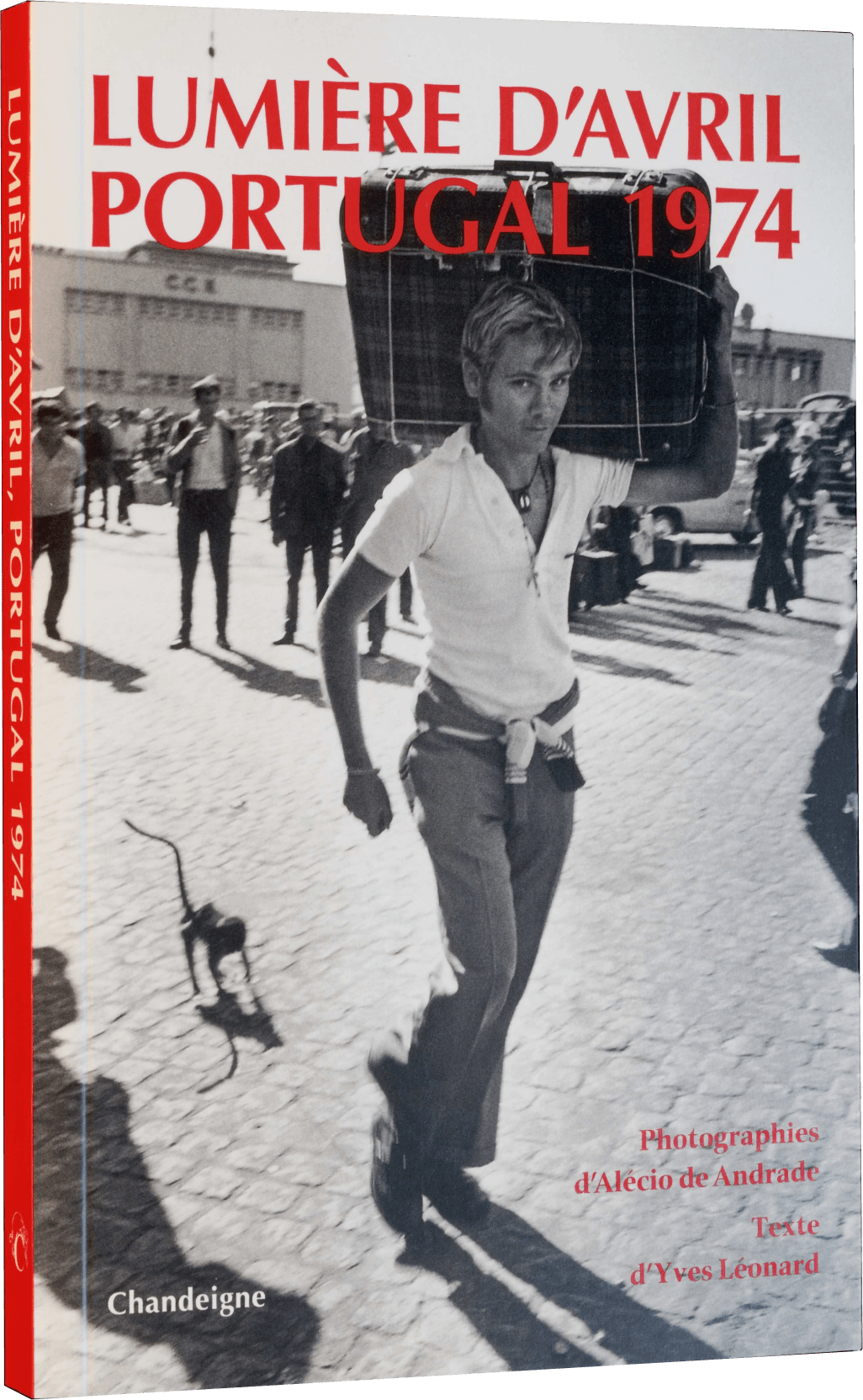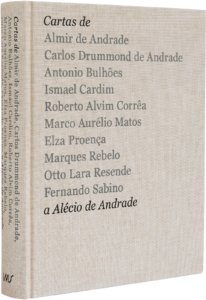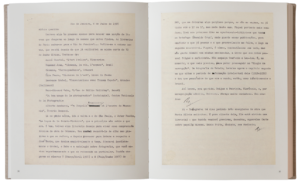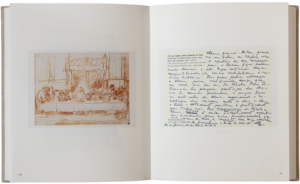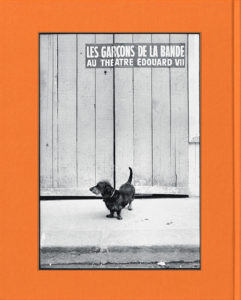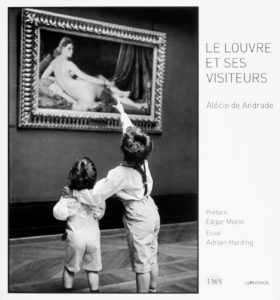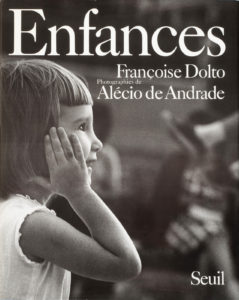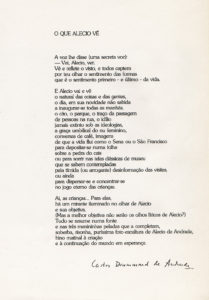Lumière d’Avril, Portugal 1974
Photographs by Alécio de Andrade.
Text by Yves Léonard.
Éditions Chandeigne, Paris, France, 2023.
144 pages, 56 ill.
A young but seasoned photographer, a carioca living in Paris since 1964, Alécio arrived in a turbulent Lisbon with a Leica slung over his shoulder, sent by the Magnum agency. Some of his photos have become part of posterity, immortalizing this or that famous figure of the Carnation Revolution. Others wait to be rediscovered, always shot from a man or a woman’s perspective, often in the thick of daily life, to seize those nameless faces that have become icons of the lively and fertile mythology of “the 25 April.” To make out a future tinted with hope, and a present heavy with permanence. To astonish and move us, half a century later. To show us a Portugal nothing like the image we have of it today. To seize the fleeting complicity of chance and necessity.
This selection is in dialogue with a recollection of the 25 April by historian Yves Léonard.
Cartas de Almir de Andrade, Carlos Drummond de Andrade, Antonio Bulhões, Ismael Cardim, Roberto Alvim Corrêa, Marco Aurélio Matos, Elza Proença, Marques Rebelo, Otto Lara Resende, Fernando Sabino a Alécio de Andrade
Conception and editorial coordination: Patricia Newcomer.
Editorial assistance: Antonio Bulhões and Ana Maria de Bulhôes-Carvalho.
Editorial coordination: Sergio Burgi and Samuel Titan Jr.
Organized by Patricia Newcomer.
Instituto Moreira Salles, São Paulo, Brazil, 2018.
360 pages, Illus.
![]() download the foreword by Rachel Gutiérrez
download the foreword by Rachel Gutiérrez
Chiens Cachorros Dogs
Photographs by Alécio de Andrade.
Text by Marie Nimier.
Trilingual: French, Portuguese (Brazil), English.
Translation: Portuguese (Brazil) Sergio Flaksman.
Translation: English Chloé Baker.
Somogy éditions d’Art, Paris, France, 2017.
72 pages, 48 ill.
An inspired text by Marie Nimier echoing the photographs of Alécio de Andrade, all of which feature dogs in various situations in Brazil, London, New York, and especially Paris. Most of these 48 pictures (1964-1994) have never been exhibited or published before.
Le Louvre et ses visiteurs | O Louvre e seus visitantes | The Louvre and its Visitors
Photographies de | fotografias de | photographs by Alécio de Andrade.
« Les imaginaires du musée du Louvre » | “Os imaginários do Museu do Louvre” | “The imaginary realms of the Louvre” | préface de | prefácio de | foreword by Edgar Morin.
« Au fil du Louvre » | “O Louvre e a luz” | “Louvre blinds” | essai de | ensaio de | essay by Adrian Harding.
Traduction | tradução | translation:
Richard Crevier et | e | and Paul Lequesne: français | francês | French;
Sergio Flaksman: portugais | português | Portuguese;
Philippa Richmond: anglais | inglês | English.
Éditions Le Passage, Paris, France, 2009.
184 pages, 62 ill.
The Brazilian photographer Alécio de Andrade (1938-2003) was also a poet, pianist and friend of writers and musicians the world over. He settled in Paris in 1964 and for the next 39 years returned time and again to the collections of the Louvre Museum. From these wanderings he has left 12,000 photographs. Each frame is like a scene from a play, with us as spectators looking over the artist’s shoulder at the actors, the visitors to the Museum. They show a poetic vision full of humour and poignancy, which allows us to understand the ways in which people appropriate public spaces and the variety of relationships, sometimes quite unexpected, that they establish with the works of art. The book conjures up the various stages of a visit like a scenario, consciously avoiding a chronological approach or documenting the museum’s transformations over the years.
Alécio de Andrade
Photographs by Alécio de Andrade.
“Alécio de Andrade: um monumento de fraternidade”, essay by Pedro de Souza.
Instituto Moreira Salles, São Paulo, Brazil, 2008.
208 pages, 165 ill.
“The photographer’s moment precedes and accompanies looking, capturing others’ moments and, in Alécio’s case, he teaches us that nothing is necessarily as we see it. But the art of capturing the fleeting moment, which became indispensible to photography throughout the 20th century, is also a homage to life, and, in that, Alécio was a master.”
Pedro de Souza
Enfances
Photographs by Alécio de Andrade.
“Les yeux ronds”, text by Françoise Dolto.
Éditions du Seuil, Paris, France, 1986.
144 pages, 56 ill.
Enfances – Erinnerungen in die Kindheit
Photographien von Alécio de Andrade.
« Runde Augen », text von Françoise Dolto.
Aus dem Französischen von Sylvia Koch.
Quadriga Verlag, Weinheim und Berlin, Deutschland, 1987.
150 pages, 56 ill.
The introduction to this book is a long conversation between the psychoanalyst Françoise Dolto and her daughter Catherine, in which she looks back on her childhood memories and especially her relationship with her parents, her brothers and her sister. Alécio de Andrade’s photographs of children slot naturally into this “impromptu evocation” as Françoise Dolto refers to it, accompanying it by making it more topical. From the early photographs taken in Brazil (1963) to those in New York and Paris (1985), the Brazilian photographer wholeheartedly captures the sense of mischief and amazement that constitute the endearing naivety of childhood.
Paris ou la vocation de l’image | París – Ritmos de una Ciudad | Paris – Essence of an Image | Paris – Bilder eines poetsichen Alltag
Photographies de | fotografias de | photographs by | photographien von Alécio de Andrade.
Essai de | texto de | essay by | essay von Julio Cortázar.
Traduit de l’espagnol par Françoise Campo-Timal, Paris | translated from the Spanish by Gregory Rabassa, New York | übersetzung aus dem Spanischen von Wolfgang Promies.
RotoVision, Genève, Suisse | Genebra, Suíça | Geneva, Switzerland, 1981; und Verlag C.J. Bucher GmbH, München, Deutschland und Luzern, Schweiz, 1981.
148 pages, 127 ill.
Julio Cortázar wrote in his preface that “Every city invents its own vocabulary, lets drop in everyday speech those expressions that can only have meaning for it, in it.” In this work, Alécio de Andrade succeeds in capturing atmospheres and arresting fleeting passing moments, catching hold of or stealing the piquancy of a particular instant. With him, Paris lives through its pores, both day and night, enjoying itself, getting married, watching, waiting and loving. The photographer’s oneness with Paris is no accident. The subtlety of the photographs in this book lies in their creator’s sensitivity for these everyday moments that, while often fleeting, are nonetheless essential, vital.
Alécio de Andrade – Fotografias
“O que Alécio vê”, poem by Carlos Drummond de Andrade.
Fundação Nacional de Arte, Ministério de Educação e Cultura, Rio de Janeiro, Brazil, 1979.
50 pages, 41 ill.
